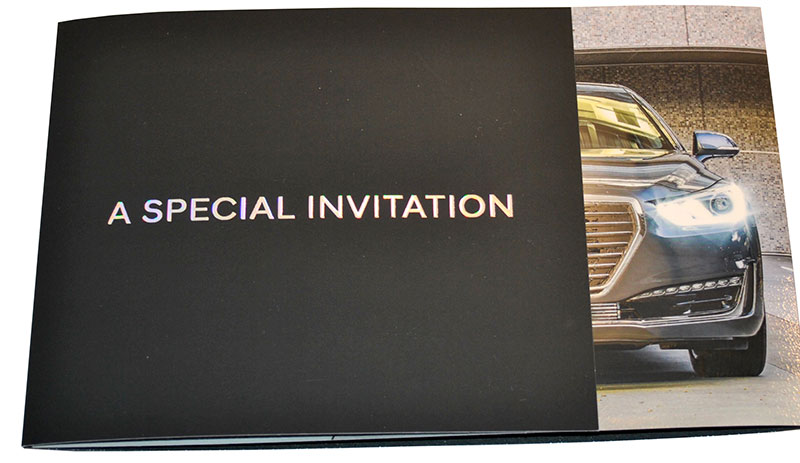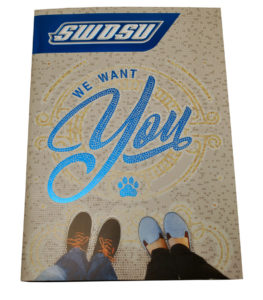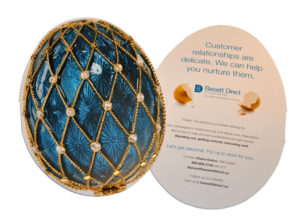
By Hallie Forcinio, contributing editor
PostPress
The world of print communication has changed, and mail volume has declined, but direct mail remains an attractive, widely used method to contact customers and prospects. Although the number one sender is the credit card industry, direct mail is used across virtually all industries by the biggest (and smallest) brands in the world. One reason for direct mail’s continued popularity is the ability to target mailings. Another reason is less competition for readership since the average person views only a couple pieces of mail each day versus the dozens of emails and digital ads that appear online.
The best reason to rely on direct mail is higher response rates. Citing statistics from the “2018 DMA Response Rate Report,” the January 31, 2019, Ripon Printers ePressLines newsletter notes direct mail house lists generate a 9% response rate and direct mail prospecting lists generate a 5% response rate – both substantially above the 1% response rate to email, paid search and social media and the 0.3% response rate to digital display ads.
The ePressLines article continues, “Perhaps the best news is that direct mail tends to make digital perform better. Statistics show that direct mail combined with digital advertising improves conversion rates 28%. And, DMA studies show that direct mail paired with other channels can lift response by 450%.”
Despite the strong success rate, direct mail marketers always are looking for ways to boost response rates even higher by enhancing printed pieces with specialty effects, such as variable and embellished print, embossing, foil, spot ultraviolet (UV) coatings, diecutting and tactile features that appeal to the sense of touch, as well as combinations of technologies. These value-added features are especially important when marketing a higher-end product, and the direct mail piece needs to reflect its upscale image.
“Customers have pointed to better response rates when utilizing specialty effects,” said Sean Hurley, vice president of sales at MCD, Inc., which recently combined foil stamping and a spot gloss UV coating on a mailer for a customer loyalty promotion.
He said, “These effects… increased the brand’s perceived value. Foil stamping, embossing and UV are instant brand enhancers… with spot gloss UV leading the way. Foil stamping elicits immediate attention from potential consumers. Embossing adds dimension and texture while UV is so versatile, with options ranging from gloss and matte to glitter and grit.”

Combinations of features including tactile elements are especially popular. One example of a piece that takes advantage of multiple technologies is an invitation to learn about a new luxury car model, the Hyundai Genesis. Produced by Print Panther, the tri-fold invitation features a shorted gate-fold front; soft-touch lamination; matte, glossy and metallic elements; and embossing, all in perfect registration. When the invitation is beautiful, guests feel special. “It always is about highlighting your message or your product/brand,” said Christine Yardley, president of Print Panther. “The soft-touch lamination and holographic foil used in the Genesis piece instantly conveys quality and prestige.”
Yardley added, “We have seen a huge increase in the use of embellishment across the board for all print – from direct mail to door hangers to annual reports. Volume is projected to be 25 billion pages by 2020. That’s more than twice the growth rate of CMYK digital printing.”
She noted clients have experienced response rate increases of up to 40% with the use of variable and embellished print.

“Embellished and personalized variable data printing delivers a better response rate because it allows you to communicate with an individual, rather than the masses. Embellished print triggers sensorial responses, making the printed piece memorable,” she said. “I also think it depicts instant quality that transcends to the product being promoted within the direct mail piece. Email open rates are declining. Many potential customers have ad blockers. This makes the sensorial aspects of direct mail very important.”
On the downside, specialty effects will increase the cost of a direct mail piece. According to Yardley, the upcharge today is minor compared to traditional foil stamping and varnish for many applications. “Previously, the cost of embellishments was cost-prohibitive; digital technologies have removed this barrier.”
This is especially true for short- to medium-sized runs where digital coatings and foils can provide embellishments at reasonable costs never before possible. Very large runs still are most feasible on more traditional foil and coating machines.
The added expense of a specialty effect is acceptable if the response rate meets expectations. “Ultimately, brands are looking for the best return on investment and specialty effects enhance perceived value,” said Hurley.
In addition, it’s easy to start out with a relatively low-cost effect like embossing, gauge results and then perhaps add other effects – such as one color of foil, multiple colors of foil or spot coatings – to boost response. Furthermore, changes can be made relatively quickly if results for a mailing don’t meet expectations.
Perhaps the biggest challenge associated with specialty effects for direct mail is understanding the processes involved. Some effects can be added inline, such as certain spot coating technologies. And, cold foil transfer can be accomplished inline and overprinted on an offset press. Others must be accomplished offline with more traditional foil and screen UV coating equipment. And, shorter runs now are being accomplished on digital coating and foil equipment. Offline processes will add time to the production schedule, but still can deliver an outcome that offsets the longer turnaround and higher cost.
Involving the supplier early in the design process is key. “Our team reviews designs to provide input that can increase productivity and potentially decrease costs,” explained Hurley. In the end, he added, specialty effects win because the goal is to increase perceived value.
Including Specialty Effects
- Is the effect compatible with your paper stock?
- Is the effect added inline or offline?
- What impact will the effect have on production? On costs?
- Highlight important features with spot varnish.
- For spot varnish and foil, less is more.
- Consider tactile features.
- Position dimensional varnish and foil effects away from folds to prevent cracking.
- Involve suppliers early to optimize designs and lower costs.
Touch sells
 Touch strongly impacts how people react to a product, evoking emotion and influencing decision making; as a result, touch plays an important role in brand perception. A Communicator’s Guide to the Neuroscience of Touch, a book published by Sappi, supplier of fine papers, explores why.
Touch strongly impacts how people react to a product, evoking emotion and influencing decision making; as a result, touch plays an important role in brand perception. A Communicator’s Guide to the Neuroscience of Touch, a book published by Sappi, supplier of fine papers, explores why.
The authors, Lana Rigsby and Dr. David Eagleman, director of Baylor College of Medicine’s Laboratory for Perception & Action and The Initiative on Neuroscience & Law, explained the hands connect directly to the brain. The communication between hands and brain remake the mind with each new experience.
“The most successful brands appeal to our haptic brains with clarity, authenticity and relevance,” they said.
Evidence supporting the impact of tactile experiences includes the results of a lab study where subjects read a company brochure on high-quality coated paper, lower-grade uncoated paper or online.
“The study found that those who read on high-quality paper understood and remembered the content best by significant margins. Companies presented on the coated paper left the best first impressions, and people were most likely to recommend those brands to friends. A week later, people still preferred the companies they read about on the high-quality paper, with name recall for those brands highest by a factor of 3:1.”
The hands/brain connection also plays a role in what is termed the “Endowment Effect,” the feeling of ownership experienced when touching an item, which prompts one to value it more. The authors note, “It turns out the Effect is so strong that you don’t have to physically own something to trigger it – a suggestion of ownership is enough to make us feel possessive. Scientific studies show that people who merely touch an object, or even imagine touching it, begin exhibiting a sense of ownership.”
In short, the authors conclude, “What we touch shapes what we feel.” It’s a powerful argument in favor of including tactile features on a next direct mail piece.

